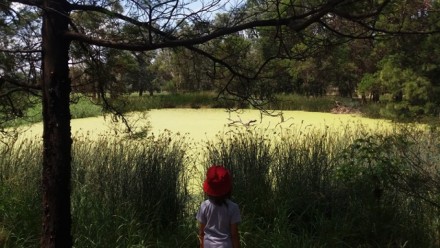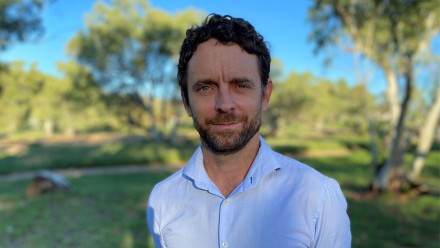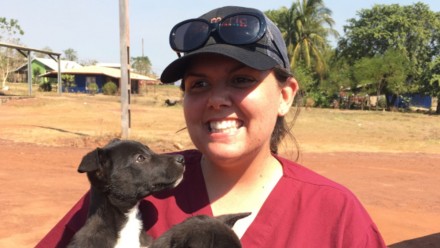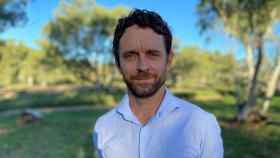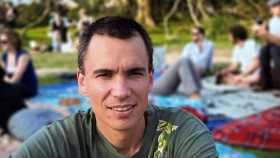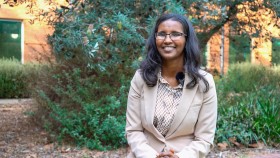Pet project delivers more than animal health
Share
Tamara Riley is combining her skills as a vet and studies in applied epidemiology to evaluate an animal health and management program in the remote Northern Territory community of Wadeye. She spoke with Liz Drummond.
You are passionate about human wellbeing, and also a vet. How do these areas intersect?
I’m interested in a holistic approach to healthcare. This recognises that animal and environmental health can impact on human wellbeing,and vice versa. So rather than just treating the human, animal, or environment, we look at how they relate to each other and in doing so support the health of the whole community. It’s known as a One Health approach. Many pathogens, like some intestinal worms, ticks andbacteria, can transfer from pets to humans. Most of these can be avoided by using preventative animal medicines. By preventing these diseases in animals, we can avoid disease in humans and limit environmental impact, improving the health of the whole community.
What is your role in the One Health Program in Wadeye?
The community of Wadeye doesn’t have a vet clinic and its remoteness — it’s a six-hour drive to Darwin by roads which can be flooded in the wet season — means that accessing professional animal care can be incredibly difficult. Animal Management in Rural and Remote Indigenous Communities, the Thamarrurr Rangers, and the West Daly Regional Council have been delivering a One Health animal program,and I have been working with them as part of my Master of Applied Epidemiology to help with animal care and to evaluate the success oftheir work.
Describe a typical day in Wadeye for you.
My trips to Wadeye usually align with the vet visits or the annual animal census. We start the day with a briefing at the Ranger Base, then go door-to-door with the Rangers to complete pet health surveys, answer any questions owners might have about their pets, and provide parasite treatment. If the vet team is in town, we will set up a temporary surgery – which can be in various locations, last time we set it up in the recycling centre. Again we will go door-to-door, but this time we will also ask the owner if they would like their pet to see a vet or have themdesexed. We then help take the animals to the surgery, and deliver the animal home afterwards.
Do you think this program goes beyond the physical wellbeing of the community
Absolutely. People can have a deep connection with their pets. In Aboriginal communities you will find that dogs and cats can be integral to life, through companionship, hunting and protection. In some communities dogs are also of cultural significance, appearing in variousdreaming stories. When people see their pets are hurt or distressed, this can be upsetting for the owner. One of the aims of the program is to see animals become healthier and happier, which can then flow on to improve the wellbeing of the owners, and the community. This is one of many things that makes this program meaningful.
What do you hope the impact of the program will be?
That people will become more aware and engaged with the program as it continues. We also hope to see an improvement in health outcomes and desexing rates of dogs and cats. The evaluation is still ongoing but so far the results look promising. Broadly, we hope that the community will see improvements in human health and the environment, as well as animal health. We also want to show that ongoing community driven animal-health and management programs are a successful way to improve health in the community. It would be fabulous to see this program inspire other remote communities with similar animal healthcare barriers to participate in similar programs in the future.






